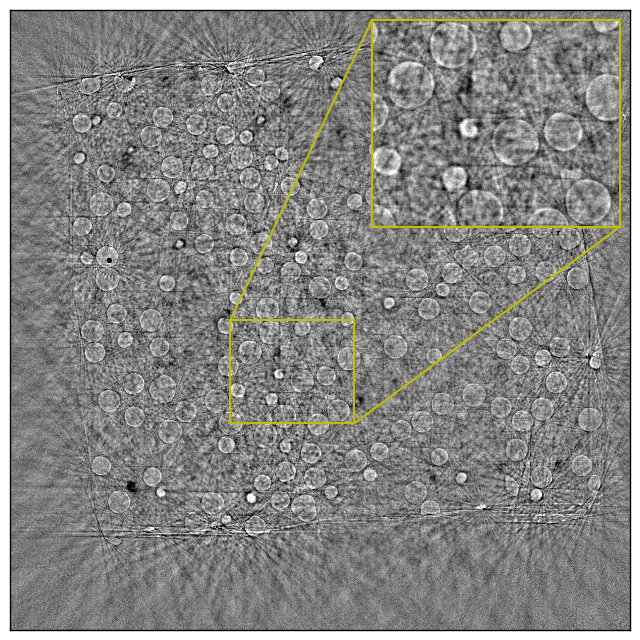TomoGAN: Low-Dose Synchrotron X-Ray Tomography with Generative Adversarial Networks
Synchrotron-based x-ray tomography is a noninvasive imaging technique that allows for reconstructing the internal structure of materials at high spatial resolutions from tens of micrometers to a few nanometers. In order to resolve sample features at smaller length scales, however, a higher radiation dose is required. Therefore, the limitation on the achievable resolution is set primarily by noise at these length scales. We present \TOMOGAN{}, a denoising technique based on generative adversarial networks, for improving the quality of reconstructed images for low-dose imaging conditions. We evaluate our approach in two photon-budget-limited experimental conditions: (1) sufficient number of low-dose projections (based on Nyquist sampling), and (2) insufficient or limited number of high-dose projections. In both cases the angular sampling is assumed to be isotropic, and the photon budget throughout the experiment is fixed based on the maximum allowable radiation dose on the sample. Evaluation with both simulated and experimental datasets shows that our approach can significantly reduce noise in reconstructed images, improving the structural similarity score of simulation and experimental data from 0.18 to 0.9 and from 0.18 to 0.41, respectively. Furthermore, the quality of the reconstructed images with filtered back projection followed by our denoising approach exceeds that of reconstructions with the simultaneous iterative reconstruction technique, showing the computational superiority of our approach.
PDF Abstract

